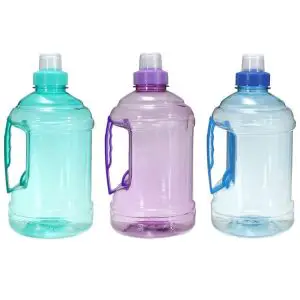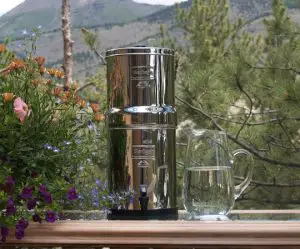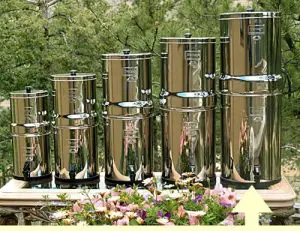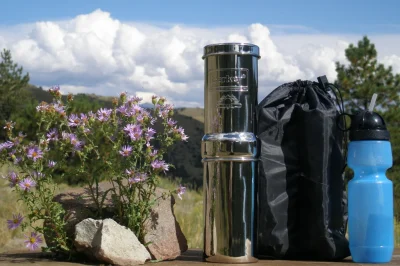Have you ever wondered, How big is 1l? Well, you’re in the right place to find out. A liter, often abbreviated as “L,” is a unit of volume measurement in the metric system. It’s commonly used to quantify liquids and gases, making it an essential concept in everyday life. So, if you’re curious about the size of 1L and how it compares to other measurements, keep reading. Let’s dive into the world of metrics.
One liter (1 L) is a unit of volume in the metric system, commonly used to measure liquids and gases. It is equivalent to 1,000 cubic centimeters (cc) or milliliters (ml). This volume is roughly equal to the capacity of a cube that is approximately 10 centimeters (about 3.94 inches) on each side.
To put it into perspective, a standard water bottle often holds around 500 ml or half a liter, while a larger soda bottle might contain 2 liters of liquid. The liter is a convenient unit for measuring quantities of fluids, and its decimal relationship with smaller metric units makes conversions between different volumes straightforward.
What is the size of 1 liter?

The size of 1 liter is a fundamental metric unit used to quantify volume. It’s utilized to measure the amount of space occupied by a substance, whether it’s a liquid, gas, or even a solid that can be poured or displaced. Understanding the size of 1 liter is essential in various fields such as science, engineering, cooking, and everyday measurements.
Equivalent Measurements:
1 liter is equivalent to:
- 1,000 cubic centimeters (cm³): This means that a cube with sides each measuring 10 centimeters in length has a volume of 1 liter. Visualize a cube that is about 3.937 inches on each side.
- 0.001 cubic meters (m³): A cubic meter is a larger unit of volume used to describe bigger quantities, and 1 liter is a small fraction of this. It’s helpful for scaling up from smaller to larger volumes.
Fluid Measurements:
When considering fluids, which include liquids and gases, 1 liter is approximately equal to:
- 33.814 fluid ounces (US): In the United States customary system, 1 liter is roughly equivalent to 33.814 fluid ounces. This measurement is commonly used for beverages, cooking ingredients, and other liquids.
- 35.195 fluid ounces (UK): In the United Kingdom, the imperial fluid ounce is slightly larger than the US fluid ounce. Consequently, 1 liter is approximately equal to 35.195 UK fluid ounces.
How large is 1 liter?
1 liter is a metric unit of volume equal to the volume of a cube with sides of 10 centimeters. It is equivalent to 1000 milliliters, 1.0567 quarts, or 0.2642 gallons.
Here are some other ways to visualize how large 1 liter is:
- It is about the same size as a standard milk jug.
- It is about the same size as a 12-ounce can of soda.
- It is about the same size as 4 cups of water.
- It is about the same size as 2 pints of water.
- It is about half the size of a gallon.
- It is equal to the volume of 1000 cubic centimeters.
- It is equal to the volume of 1 dm3 (cubic decimeter).
- It is equal to the volume of 0.001 m3 (cubic meter).
The liter is the base unit of volume in the metric system. It is a widely used unit of measurement in many countries around the world. It is used to measure the volume of liquids, solids, and gases.
Here are some examples of how 1 liter is used in everyday life:
- A liter of milk is the standard size for a milk jug.
- A liter of soda is the standard size for a can of soda.
- A liter of water is the standard size for a bottle of water.
- A liter of gasoline is the standard size for a gallon of gasoline.
- A liter of blood is the standard size for a blood donation.
What’s the volume of 1 liter?
The volume of 1 liter is equivalent to 1,000 cubic centimeters (cm³) or 0.001 cubic meters (m³). This metric unit of volume is commonly used for measuring liquids and gases. To visualize this volume, you can imagine a cube with sides each measuring 10 centimeters (about 3.937 inches) in length.
Additionally, in terms of fluid ounces, 1 liter is approximately equal to 33.814 fluid ounces in the United States and about 35.195 fluid ounces in the United Kingdom. This standardized measurement holds practical importance across various fields including cooking, science, industry, and commerce, providing a consistent way to quantify and compare the amount of substances.
How big does 1 liter measure?

1 liter is a unit of volume in the metric system. It is equal to the volume of a cube with sides of 10 centimeters. It is equivalent to 1000 milliliters, 1.0567 quarts, or 0.2642 gallons.
Here are some other ways to visualize how big 1 liter is:
- It is about the same size as a standard milk jug.
- It is about the same size as a 12-ounce can of soda.
- It is about the same size as 4 cups of water.
- It is about the same size as 2 pints of water.
- It is about half the size of a gallon.
- It is equal to the volume of 1000 cubic centimeters.
- It is equal to the volume of 1 dm3 (cubic decimeter).
- It is equal to the volume of 0.001 m3 (cubic meter).
Here are some examples of how 1 liter is used in everyday life:
- A liter of milk is the standard size for a milk jug.
- A liter of soda is the standard size for a can of soda.
- A liter of water is the standard size for a bottle of water.
- A liter of gasoline is the standard size for a gallon of gasoline.
- A liter of blood is the standard size for a blood donation.
How much room does 1 liter take up?
1 liter takes up a specific amount of space known as volume. In precise terms, 1 liter occupies a volume of 1,000 cubic centimeters (cm³) or 0.001 cubic meters (m³). This metric unit of volume is widely utilized to quantify the amount of liquids and gases.
To provide a tangible visualization, imagine a cube with each side measuring 10 centimeters (about 3.937 inches) in length. This cube encompasses a volume of 1 liter. For practical context, in relation to fluid ounces often used for liquid measurements:
- 1 liter is roughly equivalent to 33.814 fluid ounces in the United States.
- 1 liter is approximately equal to 35.195 fluid ounces in the United Kingdom.
This standardized measurement is fundamental in diverse fields like culinary arts, scientific experiments, manufacturing processes, and commercial trade, offering a consistent and universally comprehensible means of quantifying volume.
Explain the magnitude of 1 liter.
1 liter represents a specific and standardized measure of volume within the metric system. This volume unit is extensively used to quantify the amount of space occupied by liquids, gasses, or substances that can flow and fill a container. The magnitude of 1 liter can be better comprehended through various aspects:
Volume Equivalents:
- 1 liter is equivalent to 1,000 cubic centimeters (cm³). Visualize a cube where each side measures 10 centimeters (about 3.937 inches) in length; this cube would enclose a volume of 1 liter.
- In terms of cubic meters, 1 liter is equal to 0.001 cubic meters (m³). To conceptualize, 1,000 liters make up a cubic meter.
Fluid Measurements:
- In the context of fluid ounces, which are commonly used for liquid measurements:
- 1 liter is approximately 33.814 fluid ounces in the United States.
- 1 liter is about 35.195 fluid ounces in the United Kingdom.
Practical Significance: The magnitude of 1 liter holds practical significance in various fields:
- Cooking and Baking: Recipes often include measurements in liters, providing precise instructions for ingredient quantities.
- Scientific Research: In laboratories, accurate volume measurements are crucial for experiments involving solutions, reactions, and chemical analyses.
- Manufacturing and Industry: Industries rely on liters to quantify liquids in production processes, ensuring consistency and quality control.
- Automotive and Engineering: It helps estimate fuel efficiency and determine the capacity of tanks or reservoirs.
- Trade and Commerce: Transactions involving liquids, such as beverages and chemicals, utilize liters as a standardized measurement.
Global Applicability: The metric nature of the liter makes it widely recognized and accepted internationally. Its consistent use enables effective communication and collaboration across borders in various sectors.
Visualization: Imagine a common 1-liter bottle of water. This bottle holds exactly 1 liter of liquid. This visualization can help you relate the magnitude of 1 liter to everyday objects.
What is the scale of 1 liter?
The scale of 1 liter is about the size of a standard milk jug. It is about 10 centimeters tall and 10 centimeters wide. However, the scale of 1 liter can vary depending on the container that is used to measure it. For example, a 1 liter bottle of water will be smaller than a 1 liter milk jug.
Here are some other examples of the scale of 1 liter:
- A 1 liter can of soda is about 12 centimeters tall and 6 centimeters wide.
- A 1 liter bottle of juice is about 15 centimeters tall and 7 centimeters wide.
- A 1 liter bag of milk is about 20 centimeters tall and 10 centimeters wide.
How does 1 liter’s size compare?

One liter is a unit of volume in the metric system. It is equal to 1 cubic decimeter (dm³) or 1000 cubic centimeters (cm³). The liter is commonly used to measure the capacity or volume of liquids and some solids.
To put the size of 1 liter into perspective, here are a few comparisons:
- Cups and Fluid Ounces: One liter is approximately equal to 4.23 cups or 33.8 fluid ounces. This makes it a little more than four standard 8-ounce cups of liquid.
- Gallons: One gallon is equivalent to about 3.785 liters. Therefore, 1 liter is roughly one-fourth (25%) of a gallon.
- Milliliters: Since there are 1000 milliliters (mL) in a liter, 1 liter is the same as 1000 milliliters. Milliliters are often used for more precise measurements in scientific and medical contexts.
- Cubic Inches: One liter is approximately 61.02 cubic inches. This provides a comparison with the Imperial system of measurement commonly used in the United States.
- Cubic Feet: There are about 0.0353 cubic feet in a liter. This illustrates that a liter is quite a small unit of volume when considering larger spaces.
- Teaspoons and Tablespoons: There are roughly 202.88 teaspoons or 67.63 tablespoons in a liter. This can be useful when dealing with cooking measurements.
- Pints: One liter is slightly larger than 1.76 pints. Pints are commonly used for beverages in many countries.
- Quarts: One liter is a bit less than 1.06 quarts. This is another comparison with the Imperial system of measurement.
Can you define the dimensions of 1 liter?
The liter is a unit of volume in the metric system, commonly used to measure the capacity of liquids and some solids. It’s defined as the volume occupied by a cube with sides that are each 0.1 meters (10 centimeters) in length.
In terms of dimensions:
- Length: The side length of the cube that represents 1 liter is 0.1 meters or 10 centimeters. This is because 1 liter is equivalent to 1 cubic decimeter (dm³), and a decimeter is one-tenth of a meter.
- Width: Since it’s a cube, the width is the same as the length: 0.1 meters or 10 centimeters.
- Height: Again, due to the cubic shape, the height matches the length and width: 0.1 meters or 10 centimeters.
To visualize this, imagine a cube where each side is 10 centimeters long. If you were to fill this cube with a substance, it would hold 1 liter of that substance. This is because the metric system is based on powers of 10, making calculations and conversions between units relatively straightforward.
What’s the measurement of 1 liter like?
A liter is a metric unit used to measure the volume of liquids, gases, and some solids. It’s equivalent to 1 cubic decimeter (dm³) or 1000 cubic centimeters (cm³). The measurement of 1 liter represents a specific amount of space occupied by a substance.
Dimensions: While a liter itself doesn’t have physical dimensions like length, width, or height, it can be visualized using the concept of a cube. A cube with sides measuring 10 centimeters (0.1 meters) in length, width, and height would have a volume of 1 liter. This cubic shape forms the basis for the liter’s measurement.
Practical Comparisons: To understand the measurement of 1 liter in practical terms:
- It’s roughly the volume of a large bottle of soda or water that you might purchase from a convenience store.
- It’s a bit more than four standard 8-ounce cups of liquid, making it a common measurement in cooking and recipes.
- A small milk carton or juice box often holds about 1 liter of liquid.
- In terms of gasoline, 1 liter is roughly equivalent to a quarter of a gallon.
- When considering the metric system, 1 liter is the same as 1000 milliliters.
Recommended:
- How many gallons of water in a cubic foot?
- How is fuel consumption measured?
- Dimensions of a gallon of milk
- What does 5 gallons of concrete weigh?
Conclusion
In this post you will get to learn about How big is 1L? finds its answer in the realm of volume. Picture a cube with sides each measuring 10 centimeters – that’s the space 1 liter occupies. It’s the familiar size of a bottle of your favorite drink, about four cups of liquid, or a small carton of milk.
Whether you’re cooking up a storm, fueling your car, or quenching your thirst, 1 liter is a metric marvel that captures a specific volume with simplicity.


